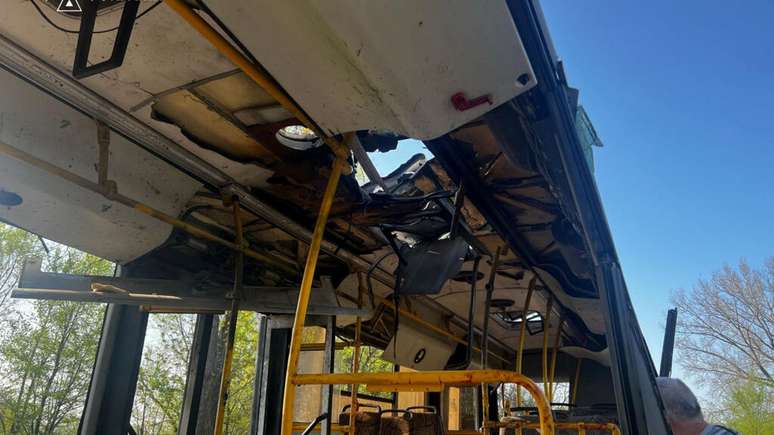Every health institution offers one type of medical care. Know which service to look for when needed

Whether it’s chest pain, food poisoning, fever, or a fracture, you’ll need to see a doctor at some point. But which service to use? According to the Ministry of Health, 85% of health problems can be solved without the need to go to the emergency room or emergency room. Despite this, most of the population still resorts first to the hospital emergency room.
The result is long queues for exams, overcrowded patients and overloaded healthcare staff. All these are factors that hinder most healthcare institutions. While the search for care is complex and diverse, the pandemic has brought important lessons about how this type of service works. However, some uncertainties remain about the differences in the support offered by Primary Health Units, Emergency Departments or hospitals.
With that in mind, let’s explain the purpose of each type of medical service and their main differences. To watch:
UBS extension
Within the Unified Health System (SUS), the so-called gateway is the Basic Health Unit (UBS), also known as a garrison or health center. They are establishments that give access to routine consultations, consultations, treatments, free medicines, vaccines and medical follow-up. It is also the right way forward for mild to moderate cases, such as flu symptoms, dizziness, abdominal pain, malaise, diarrhoea, vomiting and conjunctivitis, as well as for the treatment and monitoring of sexually transmitted infections (STIs).
UBS has family doctors with extensive and integrated training. Therefore, they are ready to provide medical care to patients of all ages. “The main objective of these units is to provide assistance to the health problems of the population, when there is no need for referrals to other services, such as emergencies and hospitals,” explains Rômulo de Almeida Torres, cardiologist at Universitário Cajuru and Marcelino hospitals Champagnat.
UPA
With a focus on attention to urgencies and emergenciesFirst Aid Units (UPA) are open 24 hours a day, seven days a week. The service is provided by the emergency room, where there is a medical team that investigates and treats diseases such as hypertension, high fever, fractures, cuts, heart attacks and strokes. With more resources than a health facility, the unit serves patients of medium complexity, a cross between a health center and hospitals.
The structure, equipped with radiology, electrocardiography, paediatrics, an examination laboratory and observation beds, collaborates to reduce queues in hospital emergency rooms. In the unit, doctors provide care that monitors symptoms and details the diagnosis, allowing the patient to be stabilized and able to go home. However, if there is no improvement in his health, he is referred to the hospital.
Emergency room
Open fractures, severe trauma, heart attacks, convulsions, pneumonia, strokes and bleeding are situations that require intervention immediate medical care. The correct destination for highly complex events such as these is hospital emergency rooms. This service deals with serious cases usually reported by urgent and emergency services, such as Siate and Samu.
With a multidisciplinary team – composed of emergency physician, general surgeon, orthopedist, neurosurgeon, general practitioner and nurses – patients are received, evaluated and classified through a triage that follows global recommendations.
A point of reference in support for trauma victims, the emergency room of the Hospital Universitário Cajuru in Curitiba (PR) carries out an average of 33,000 visits a year, which can be followed by hospitalizations, surgeries and outpatient visits. “The number of victims who arrive here with a very complex clinical picture is high. Accidents involving motorcycles and pedestrians are usually the most serious injuries. In these situations, maintaining life is the priority of care,” explains Rômulo de Almeida Torres, medical coordinator of the unit’s emergency room, which provides 100% care through the SUS.
emergency service
The emergency room of a hospital also receives patients with delicate health conditions and who are eager to make an appointment. However, these are less serious cases. Intended to perform a faster medical care, especially for those who are not at imminent risk of death, the units are ready to provide all necessary care in a timely manner. They are multidisciplinary and specialized teams who treat patients who have wounds, pain, allergies, shortness of breath and infections, for example.
“In emergency care, our doors are open for patients with acute health problems, i.e. alterations outside the standard of health and who need immediate intervention,” concludes Rômulo, who is also the medical coordinator of the Emergency Department of the Marcelino Champagnat Hospital.
+The best content in your email for free. Choose your favorite Terra newsletter. Click here!
Source: Terra
Ben Stock is a lifestyle journalist and author at Gossipify. He writes about topics such as health, wellness, travel, food and home decor. He provides practical advice and inspiration to improve well-being, keeps readers up to date with latest lifestyle news and trends, known for his engaging writing style, in-depth analysis and unique perspectives.








